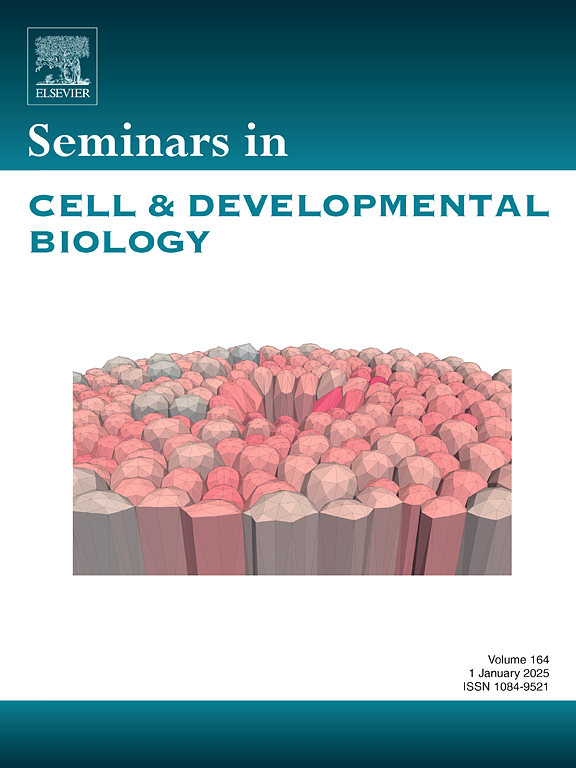心脏发生和先天性心脏病细胞类型的体外建模。
IF 6
2区 生物学
Q1 CELL BIOLOGY
引用次数: 0
摘要
先天性心脏缺陷(CHD)存在于近1 %的活产婴儿中,是婴儿死亡的主要原因。尽管基因组测序技术取得了进步,对心脏发育所需基因的了解也有所增加,但大多数冠心病病例的病因仍不明确。最近在单细胞基因组学、谱系追踪和心脏发生动物模型的实时成像方面的突破揭示了心脏发育中离散细胞类型的精确时空动态。在这里,我回顾了这些发现如何为新的人类多能干细胞方法的发展提供信息,以在心脏发生中产生多种细胞。一个关键的统一主题是,多能性心脏祖细胞对在心脏分化的各个阶段给予的信号因子的轻微变化具有非凡的反应。我强调了如何利用制造一系列心脏细胞类型的能力来定义冠心病的特定机制。然后,我描述了体外心脏发生的人类模型在严重形式的冠心病(如单心室疾病)的情况下是如何特别重要的,因为复杂的遗传潜在机制尚未明确,而且缺乏动物模型。本文章由计算机程序翻译,如有差异,请以英文原文为准。
In vitro modeling of cell types in cardiogenesis and congenital heart disease
Congenital heart defects (CHD) are present in nearly 1 % of live births and are a leading cause of infant mortality. Despite advances in genome sequencing technologies and an increased understanding of the genes necessary for heart development, the etiology of a majority of CHD cases remains undefined. Recent breakthroughs in single-cell genomics, lineage tracing, and live imaging in animal models of cardiogenesis have revealed the precise spatiotemporal dynamics of discrete cell types in heart development. Here, I review how these findings have informed the development of new human pluripotent stem cell methods to generate a diverse range of cells in cardiogenesis. A key unifying theme is that multipotent cardiac progenitor cells are extraordinarily responsive to slight changes to signaling factors administered at various stages of cardiac differentiation. I highlight how the ability to make a range of cardiac cell types can be used to define context specific mechanisms of CHD. I then describe how in vitro human models of cardiogenesis are especially important in cases of severe forms of CHD, such as single ventricle disorders, for which the complex genetic underlying mechanisms are poorly defined and animal models are lacking.
求助全文
通过发布文献求助,成功后即可免费获取论文全文。
去求助
来源期刊
CiteScore
15.10
自引率
1.40%
发文量
310
审稿时长
9.1 weeks
期刊介绍:
Seminars in Cell and Developmental Biology is a review journal dedicated to keeping scientists informed of developments in the field of molecular cell and developmental biology, on a topic by topic basis. Each issue is thematic in approach, devoted to an important topic of interest to cell and developmental biologists, focusing on the latest advances and their specific implications.
The aim of each issue is to provide a coordinated, readable, and lively review of a selected area, published rapidly to ensure currency.

 求助内容:
求助内容: 应助结果提醒方式:
应助结果提醒方式:


